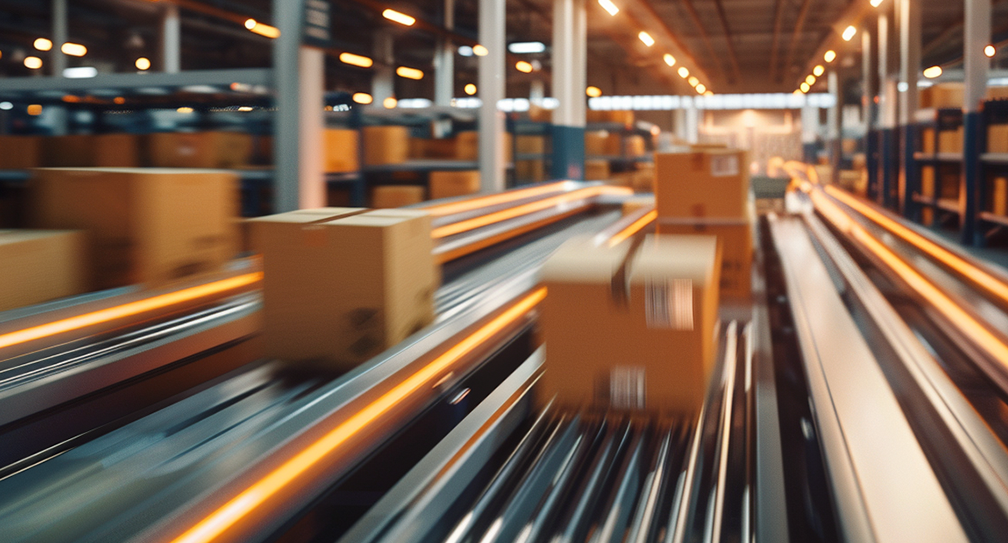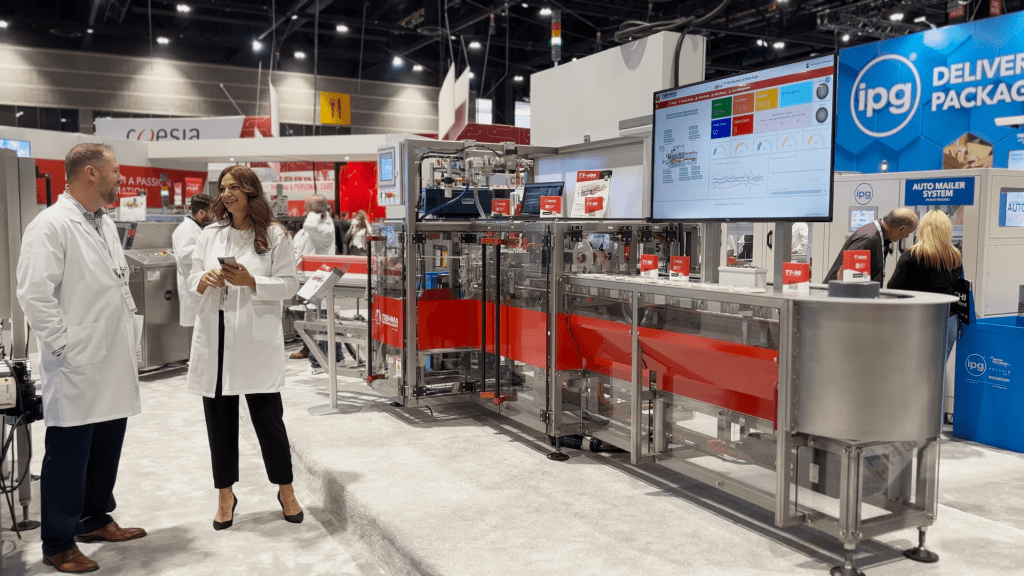Packaging Industry Trends For 2020
The packaging industry is a huge economic generator on a glob al scale. Demand for the world packaging industry will reach $1.05 trillion by 2024, according to the statistics from the well-recognized Smithers Pira organization. This enormous growth rate is driven by consumer trends and industry trends, and we are going to examine those trends in the following lines.
REVOLUTION IN DIGITAL PRINTING
The new decade will be dominated by digital technologies. Digital printing uses computer generation as the main mechanism behind product packaging design and creation of the images or graphics that will appear on the packaging. Today, digital printing influences every aspect of the packaging, and this trend will continue.
In comparison to mechanical processes like typesetting, digital printing allows packagers far more freedom in personalization and customizing options.
During the past decade, most packaging companies switched from analog to digital printing. However, complete retooling of a factory takes time. In 2020, there are only a few companies that haven’t yet got on the digital train and made that progressive investment.
In this decade, the packaging industry reached a tipping point. The use of conventional presses declined, while the use of digital presses grew. A trend of “printing on-demand” emerged since digital printing technology allows all colors to be printed in a single pass. Studies say this demand will only grow. By 2024, it is estimated the global digital printing packaging market will reach $28 billion, which proves a significant trend change in the packaging industry.
PERSONALIZED PACKAGING
Customization and personalization of products became much easier due to digital printing. This trend has been building for a few years, and it has a major industry impact in 2020. Many of the top product brands found a significant return of the investment with personalized packaging. One report cites that 70% of marketers believe personalization has a strong and powerful impact on their customers.
Personalization allows a company to stand out from competitors by promoting their name and brand in an impactful way.
Here are three successful examples of the personalized packaging trend.
- Coca-Cola printing people’s names on their soft drink containers
- Frito-Lay printing faces on their potato chip packages
- Bud Light printing football teams on their beer cans
More and more brands are even beginning to target extremely narrow markets with their packaging. For example, Anheuser-Busch designs their Busch and Busch light beer cans using the outdoor motives, to appeal to hunters, fishers, and other outdoorsmen. During hunting and fishing seasons, they have a “hunt” for a particular can, which can win you gear and even a hunting trip paid for by the company.
Allowing individuals to identify with a brand’s product is what lies behind the success of this trend. Smart marketers know people relate to stories as much as they do to brand names. If you want your product to be irresistible, present its package in a story-like way that connects to consumers on an individual level.

TRANSPARENCY AND CLEAN LABELS
Another strong packaging industry trend for 2020 is presenting product information clearly and transparently. Consumers today have easy access to a lot of information, and they can educate themselves about product choices. A smart consumer wants to know what the product they buy contains and which packaging methods were used.
“Transparency” refers to manufacturers being completely open and honest about what the products contain. “Clean” means products are safe and don’t contain harmful ingredients. If you want to promote trust in the company’s brand name, pack your product in a way that makes content information clear, concise, and open.
More and more U.S. consumers are scanning food packages with their smartphones to find out exactly what they contain. Brands answered the clean and transparent trend in 2020 with the implementation of Smart Label™. The label code immediately connects consumers to a landing page with transparent information about how clean this choice may be. Transparency will likely remain one of the demands in 2020 as consumers are more likely to purchase a newly launched food product that has clear product information.
PLAYFUL COLORS, DESIGNS, AND GRADIENTS
Many companies recognize how well intense colors, designs, and dramatic effects stand out. They also see how well this trend results in increased sales volume. In 2020, this trend will remain stable.
Humans respond well to packaging with unique designs and colors. Information from the Pantone Color Institute states people experience 80% of their awareness from sight. Loud colors like neon green and bright yellow quickly attract a person’s attention. So do effects like shining metallic sheens and reflective surfaces.
Good packaging design is supposed to grab hold of a consumer’s notice and retain the memory. According to studies, people make subconscious decisions about buying products within the first minute and a half after observing it, and color often plays a big role in this decision.
2020 will be marked by the continued dominance of bold packaging colors along with the rise of playful graphics on packaging. Brands targeting a youthful audience are advised to use unique typography and quirky design to convey a lightheartedness that suits their target group. The popularization of color gradients is another trend within unique package graphics. Gradients are incredibly dynamic because they provide complexity without adding busyness. This subtle yet striking visual effect is the main reason why brands are adopting gradients and applying them everywhere – from logo design to packaging design.
GROWTH IN FLEXIBLE PACKAGING

One of the trends that continue to gain great popularity is flexible packaging. The products that were once restricted to rigid and hard materials today can be packed in flexible packaging, due to technological advancement in flexible packaging materials.
The United States accounts for approximately $170 billion in the global packaging market. The Flexible Packaging Association reports the flexible packaging segment accounts for 19% of the total U.S. packaging market.
Flexible packaging has many advantages over rigid packages due to the following factors:
- It is easier to store.
- It has an extended shelf life.
- It is more convenient to open.
- It is highly practical to close or reseal.
- It has a more attractive shelf appeal.
- It uses less material.
- It has improved cost economics.
- It weighs less.
- It has better shipping characteristics.
- It is better suited for e-commerce.
Material advancement is one of the reasons why flexible packaging is such a prominent trend. For years, most flexible packaging materials were polyvinyl chloride, which was environmentally hostile because this plastic wouldn’t break down or decompose. Today, most flexible packaging uses materials made of polyethylene, polyethylene terephthalate, or polypropylene. These high-tech plastics deteriorate when discarded, but stay durable when in use.
New end-of-life recycling programs are trending and propelling flexible packages even more. Smithers Pira reports the flexible packaging industry will grow by 3.3% each year to reach $269 billion in 2024.
RECYCLED PACKAGING PRODUCTS IN USE
.webp?width=1200&height=630&name=2%20(1).webp)
The recycled packaging trend has never been so popular. The recycling movement started a generation ago, guided with the 3-R principle: reduce, reuse, and recycle. Today, the 3-R model creates a circular economy, and it became a standard for how proper product packaging performs. Recycling has now become firmly embedded in the American psyche.
Recycled packaging is part of the worldwide sustainability movement. For years, the vast majority of packaging waste found its way to landfills, while the mass of non-perishable plastics is currently floating in the oceans.
That pollution cannot be ignored, and many consumers want to do what they can to prevent it. That is why they’re choosing products in recyclable packaging.
In 2020, businesses are also expected to join the recyclable packaging movement. For example, Amazon is taking action and requiring its vendors to meet waste-efficient packaging standards or pay a $1.99 fee per package. Also, over 400 organizations have signed the New Plastics Economy Global Commitment, committing to increase their recycled packaging by 25% by 2025.
The packaging material industry is also influenced by technology. Advancements in plastic and paper chemistry now allow recycling to be more comfortable and more convenient than ever. Federal, state, and local authorities also promote and encourage packaging recycle programs. Consumer choice and company action are some of the main things driving the 2020 trend toward recycled packaging products. People avoid purchasing anything packaged in non-recyclable materials, and companies are switching materials to accommodate.
LABEL PRINTING OVER STICK-ON SHIPPING LABELS
Stick-on shipping labels used to be the standard in product packaging. Before the product went out the door, the shipping labels were the last things to go on a packaged product. Back in the old days, this made sense, because most packages were complete before the shipper knew their destination.
2020 announces the end of this shipping label trend. Now, many sellers already know their recipients, so they package their products on demand.
Digital printing has replaced stick-on shipping labels in many businesses. Label printing directly on packaging removes one step in the distribution process, thus lowering the costs.
CORRUGATED PACKAGING

Online shopping grows rapidly, and e-commerce packaging has become more important within the packaging industry. Due to its stable structure and sustainable qualities, rigid packaging, such as corrugated packaging, will dominate the sector.
The focus on sustainability and plastic replacement is increasingly at the forefront of packaging strategy for leading brands, which is why most of them are replacing single-use plastic with widely recycled material – such as corrugated.
Innovations such as reusable printed sleeves that sit over multiple-use corrugated boxes will help ensure that brands can meet consumer demands for sustainable and more environmentally friendly packaging solutions.
Tishma Technologies and Nortech packaging will stay devoted to providing highly efficient packaging equipment that will allow manufacturers to keep the step with the time.
If you want to pack your products in some kind of corrugated packaging, make sure to check out our cartoners, tray packers, and case packers.
If you think flexible packaging is more appropriate for your product, make sure to learn more about our pouch packaging solutions, suitable for all kinds of recyclable and non-recyclable pre-made pouches.



